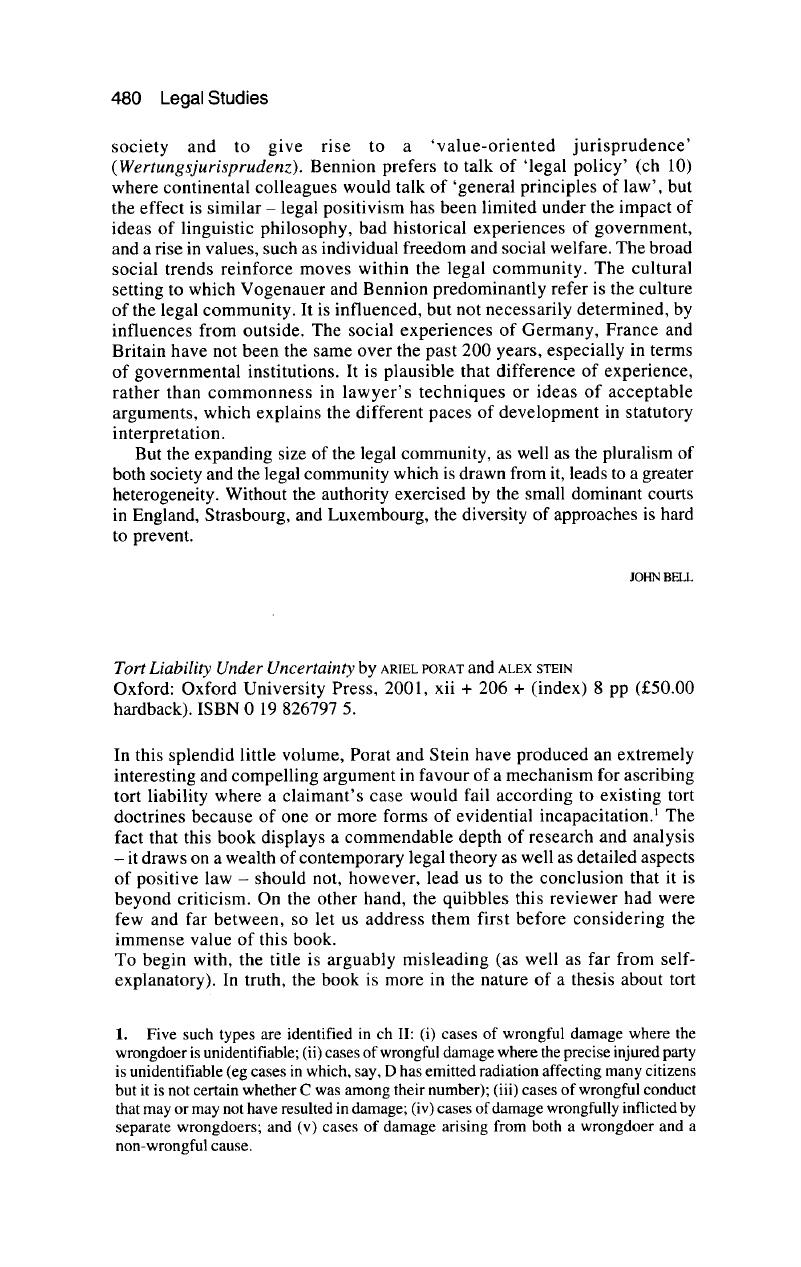No CrossRef data available.
Published online by Cambridge University Press: 02 January 2018

1. Five such types are identified in ch 11: (i) cases of wrongful damage where the wrongdoer is unidentifiable; (ii) cases of wrongful damage where the precise injured party is unidentifiable (eg cases in which, say, D has emitted radiation affecting many citizens but it is not certain whether C was among their number); (iii) cases of wrongful conduct that may or may not have resulted in damage; (iv) cases of damage wrongfully inflicted by separate wrongdoers; and (v) cases of damage arising from both a wrongdoer and a non-wrongful cause.
2. Cf authors' earlier articles: A Porat and A Stein ‘Liability for Uncertainty: Making Evidential Damage Actionable’ (1997) 18 Cardozo LR 1891.
3. One of the authors' problem cases is called The Injured Shoulder Case. It is described thus: ‘The plaintiff is admitted into hospital to have his appendix removed. In the course of treatment, the plaintiff's shoulder is injured. His injury is caused negligently by one of the eight people on his attending medical staff’ (p 59). This would clearly present no problem in New Zealand because of the no fault liability scheme in place to deal with such matters. Nor would it necessarily be a problem in this country if all the staff were employees of the same NHS Trust, allowing the vicarious liability principle to be invoked: see Cussidy v Ministry of Health [1951] 2 KB 343.
4. The Canadian Supreme Court, eg, announced the ‘death’ of res ipsa loquitur in that jurisdiction in Fontaine v Loewen Estate [1998] 156 DLR (4th) 581. This is even acknowledged by the authors, who spend an entire chapter (ch III) assessing the shortcomings of res ipsa loquitur: p 91.
5. See eg Cane, P The Anatomy of Tort (Oxford: Hart Publishing, 1998)Google Scholar; G T Schwartz ‘Mixed Theories of Tort Law: Affirming Both Deterrence and Corrective Justice’ (1997) 75 Texas LR 1801.
6. [2002] UKHL 22, [2002] 3 WLR 89.
7. Morality, in this context, means corrective justice and Dworkian notions of fairness: see pp 37–42.
8. There is, to be fair, acknowledgement of both these points in the book: see eg p 71 n 49, p 11 and p 82.
9. Collective liability can take three forms, but the basic idea is that where D cannot be specifically identified, but the class to which D belongs is both limited and clear, D1, D2, D3, … etc can each be made to contribute to C's remedy.
10. See n 1 above.
11. Tort law is frequently bedevilled by normative terms and phrases that make the imposition of liability all but policy-based in many instances: ‘the duty of care’, ‘foreseeability’, ‘reasonableness’ and ‘proximity’ or ‘neighbourhood’ are but a few examples. Cf pp 160–165.
12. Without saying what the illnesses are, it is equally conceivable that the uncertainty is attributable to the complex and/or little understood aetiology of their particular illnesses.